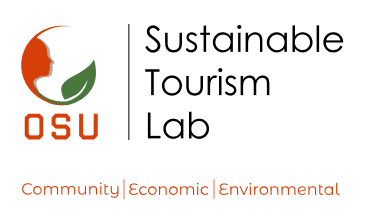The travel and tourism industry continues to be a major economic driver globally and closer to home in Central Oregon (CO). In 2023, according to the World Travel and Tourism Council, the travel industry represented 9.2% of global GDP. Closer to home, according to Dean Runyan Associates’ 2022 report, Central Oregon’s travel economy was approximately $1.3 billion. Most economic leading indicators for travel provided by STR, like occupancy (58.9%) and average daily rate ($157.26), were healthy coming into 2024. Central Oregon, and specifically Bend, is tracking closely to benchmark destinations like Bellingham, Washington; Boseman, Montana; and Flagstaff, Arizona. The industry will always be susceptible to macro-environmental shocks, so forecasting 2024 revenue is difficult. However, the general consensus is that the rapid revenue growth of the last several years will moderate; the industry is projecting little to no growth for 2024.
As a result of this financial performance, Bend’s 10.4% lodging tax generated from tourism accounted for $14,566,143. Tourism tax collection to the unrestricted general fund, which typically financially supports fire, police, and roads, totaled $9,526,257 over the last 12 months. The remaining 35.4% of tax revenue went to promote marketing activities and grant programs to support businesses struggling during the off-season and low-demand tourism months.
Although parts of the industry are returning to normal, some changes over the last few years will likely persist. During the COVID pandemic, the shock to the travel and tourism labor market was significant, impacting service levels, operations, and, in some cases, the financial viability of companies. The industry, nationally and within Central Oregon, responded with significant pay increases to attract and maintain labor. These pay increases appear to be lasting.
Due to the labor shock, substantial investments in service automation technology also reached record levels and are likely to bear more fruit in 2024. These investments improved operational efficiency by lowering labor costs and, in some cases, also achieved a second goal of improving customer service.
Customer awareness and desire to lessen the impact of their travel on the environment and communities hosting them have changed substantially as well. Sustainable travel was once a niche customer segment that favored eco-tourism. However, mainstream customer adoption of sustainable travel practices, such as do-no-harm to the destination, is expected to continue as more customers look to minimize community and environmental impacts.
These and other changes are pushing Destination Marketing Organizations (DMO) to rethink their role as purely economic development organizations and instead introduce themselves as destination stewards. Communities worldwide are rethinking tourism and are now asking DMOs to ensure that destinations provide the same type of experience to future generations of visitors and travelers as they do today.
Responding to this shift, DMOs are embracing sustainable tourism, which is an economic development model that focuses on preserving financial and economic development through community engagement and minimizing the environmental impact of tourism. Visit Bend was recently recognized as a national leader in this space with its recent Partner of the Year Award from Leave No Trace. Related efforts also include Visit Bend’s sustainability and cultural grant programshich financially support the development of dual-use facilities to be enjoyed by both locals and visitors.
In summary, the travel and tourism industry will continue to play a vital economic role in our region in 2024, supporting livelihoods and amenities for residents. It will also create new experiences for our visitors while providing critical tax revenue to support Central Oregon’s essential services.


